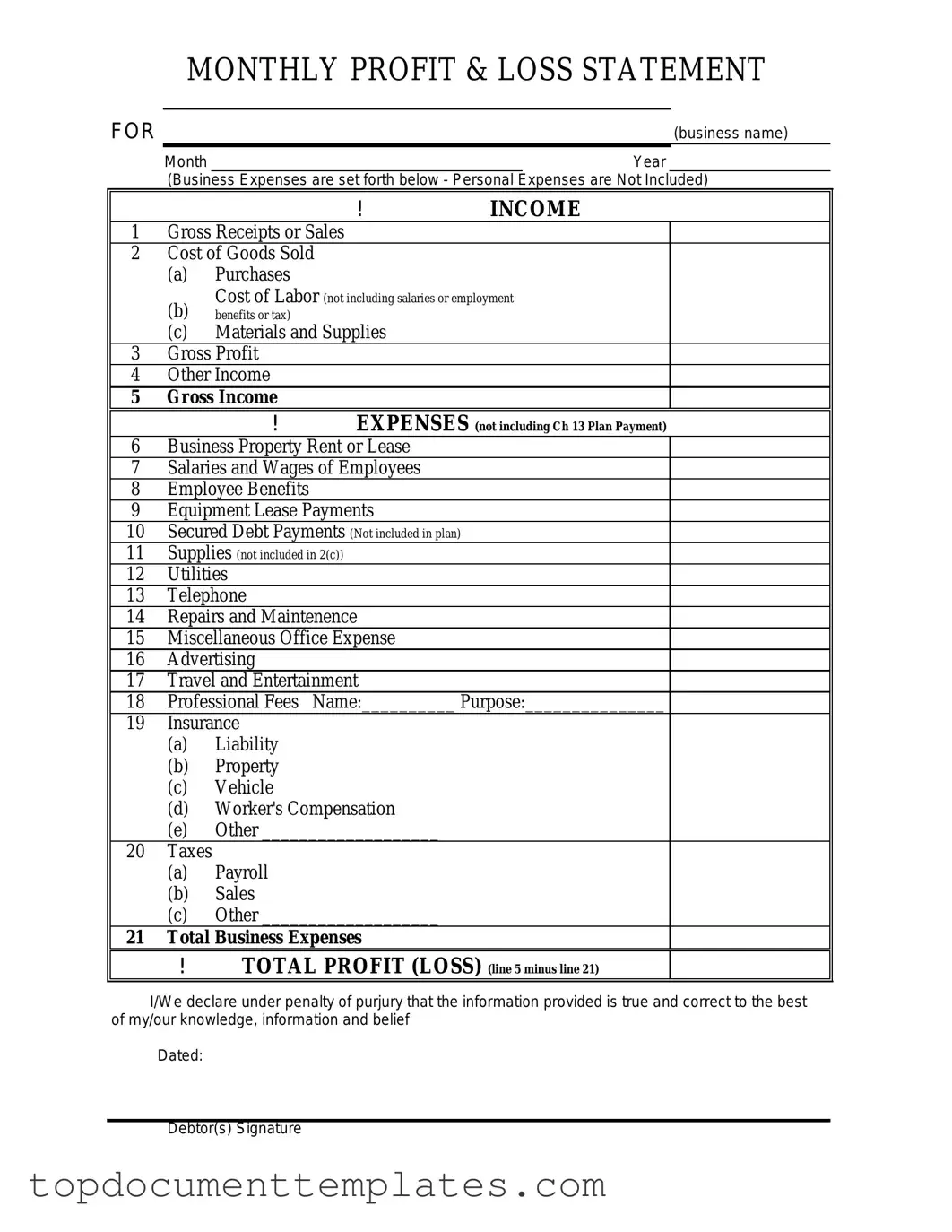Blank Profit And Loss PDF Form
The Profit and Loss form is a financial statement that summarizes the revenues, costs, and expenses incurred during a specific period. This document provides a clear view of a business's profitability, helping owners and stakeholders make informed decisions. To ensure accurate financial reporting, consider filling out the form by clicking the button below.
Open This Form
